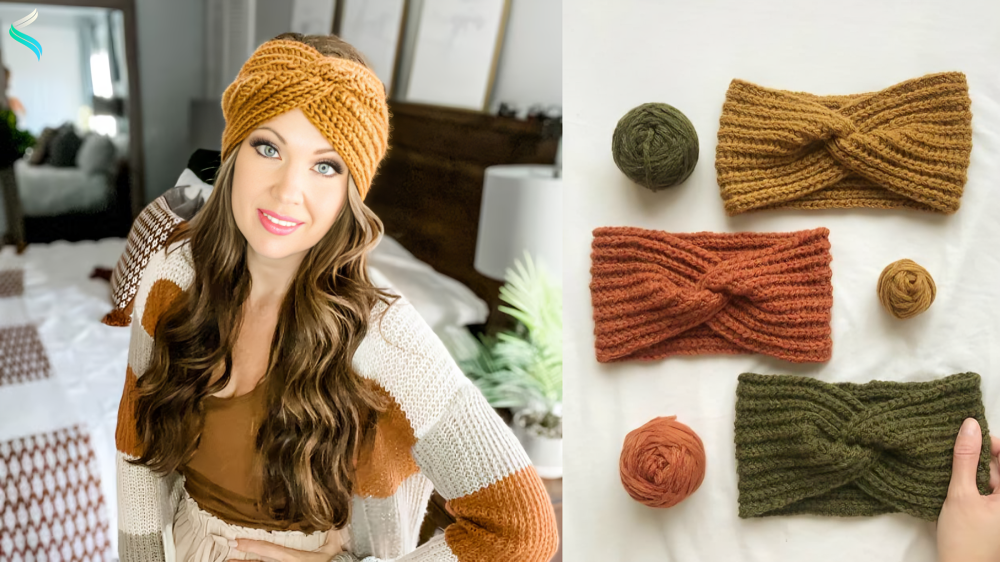The Bachelor Button Flower, also known as the Cornflower, is a delightful annual bloom that captivates gardeners and flower enthusiasts with its vivid blue hues and simple charm. Known for its ease of cultivation and ability to thrive in a variety of conditions, the Bachelor Button Flower has earned a special place in many gardens worldwide. Whether you’re an experienced gardener or a beginner looking to try your hand at cultivating this beautiful flower, there are a few important steps you can follow to ensure your Bachelor Button Flower blooms to its fullest potential.
In this comprehensive guide, we will dive into everything you need to know about the Bachelor Button Flower from its history and significance, to its ideal growing conditions, to the best practices for planting, maintaining, and ensuring its blooms remain vibrant throughout the season. We will also explore how you can incorporate the Bachelor Button Flower into your landscape, and even how to use it for decorative and culinary purposes.
Let’s explore the beauty and simplicity of the Bachelor Button Flower and learn how you can successfully cultivate these lovely blooms in your garden.
The History and Significance of the Bachelor Button Flower
Before diving into the best ways to cultivate the Bachelor Button Flower, it’s important to understand its rich history and symbolism. This vibrant bloom has been admired for centuries and has a long-standing cultural significance in many parts of the world. The Bachelor Button Flower is native to Europe but has since spread across the globe, particularly thriving in North America and other temperate regions.
The name “Bachelor Button” originates from the flower’s association with young, unmarried men. Traditionally, bachelors would wear this bloom in their buttonholes to signal their availability for courtship. This small, beautiful flower was seen as a symbol of hope in love, and if the bloom lasted, it was thought to bring good luck in finding a partner. However, if the flower wilted quickly, it was seen as an omen that the love was unrequited.
Aside from its romantic associations, the Bachelor Button Flower holds a special place in folklore and culture. It has been recognized as a symbol of fertility, youth, and vitality. In addition, its hardy nature and ability to thrive in diverse conditions have made it a popular flower choice for gardeners who want something low-maintenance yet visually striking.

Ideal Growing Conditions for the Bachelor Button Flower
The Bachelor Button Flower is incredibly resilient and can grow in a wide range of soil types and conditions. This makes it a perfect option for gardeners of all skill levels. However, like any plant, it will flourish best when its ideal growing conditions are met. Here are some of the key factors that will help your Bachelor Button Flower thrive:
Soil Requirements
The Bachelor Button Flower prefers well-drained soil with a neutral pH, though it can tolerate slightly acidic or alkaline soils. One of the advantages of the Bachelor Button Flower is its ability to grow in poor soils, making it an excellent choice for areas where other flowers might struggle. However, if you want to give your flowers the best chance of producing vibrant blooms, it’s a good idea to enrich the soil with organic matter such as compost before planting.
Sunlight Exposure
Full sun is essential for the Bachelor Button Flower to grow and bloom effectively. These flowers love basking in the sunlight and will reward you with their brightest and boldest colors when exposed to at least 6 to 8 hours of direct sunlight each day. If planted in partial shade, the flowers may still grow, but they will likely produce fewer blooms and the color may not be as intense.
Watering Needs
While the Bachelor Button Flower is drought-tolerant, particularly once established, it’s important to provide consistent watering during the early stages of growth. After planting, water the seeds thoroughly and keep the soil moist until the seedlings emerge. Once the plants are more established, you can reduce the frequency of watering, as the Bachelor Button Flower can survive on minimal water. However, during extended periods of drought, it’s a good idea to water them to prevent wilting and to promote continuous blooming.
Temperature and Climate
The Bachelor Button Flower is well-suited to temperate climates and is hardy in USDA zones 2 through 11. It can tolerate both hot and cool temperatures, but it performs best in the cooler months of spring and fall. In warmer climates, it may stop blooming during the hottest part of the summer but will often return once the temperatures cool down. In colder regions, these flowers can be sown in the fall and will bloom in early spring, making them a versatile option for a wide variety of gardens.

How to Plant Bachelor Button Flower
Planting the Bachelor Button Flower is relatively easy, and it can be done directly on the ground or in containers. Here’s a step-by way of-step guide that will help you get started out:
When to Plant
For most regions, the best time to plant the Bachelor Button Flower is in early spring, after the danger of frost has passed. If you live in a colder climate, you can also plant the seeds in the fall, allowing them to overwinter and bloom early in the spring. If you’re sowing seeds indoors, start them 4 to 6 weeks before the last frost date and transplant them outdoors once the weather warms up.
Preparing the Soil
Prepare the planting location by way of getting rid of weeds and loosening the soil. Although the Bachelor Button Flower isn’t too particular about soil quality, it will benefit from a light application of compost or fertilizer to help the seeds germinate and grow strongly.
Sowing Seeds
The Bachelor Button Flower can be sown directly into the soil by scattering the seeds lightly and covering them with a thin layer of soil—about 1/4 inch deep. Space the seeds about 6 to 12 inches apart to allow room for the plants to grow without overcrowding.
Watering After Planting
Once the seeds are planted, water the area gently but thoroughly. Keep the soil consistently moist until the seeds have germinated, which usually takes about 7 to 10 days. Once the seedlings have emerged, reduce the frequency of watering but continue to monitor the soil moisture to prevent it from drying out completely.
Caring for Your Bachelor Button Flower
Once your Bachelor Button Flower is established, it requires very little care to continue thriving. However, there are a few key practices that can help ensure you get the most out of your blooms throughout the season.
Deadheading
Deadheading, or the removal of spent flowers, is essential for promoting continuous blooming. By disposing of faded or wilted flora, you encourage the plant to supply new blooms as opposed to focusing its strength on seed production. Simply pinch or snip off the old blooms to keep your Bachelor Button Flower looking fresh and vibrant.
Fertilization
While the Bachelor Button Flower doesn’t require heavy fertilization, applying a balanced, all-purpose fertilizer once or twice during the growing season can help improve the quality of the blooms. If your soil is particularly poor, you may want to add a slow-release fertilizer at the time of planting to give your plants a boost.
Pest and Disease Management
The Bachelor Button Flower is notably pest-resistant, but it can occasionally entice aphids or different small bugs. If you notice pests in your plant life, you could use insecticidal cleaning soap or neem oil to deal with the problem. Additionally, make sure to space the flora appropriately and provide good air flow to save you fungal sicknesses like powdery mold from developing.
Supporting Taller Varieties
Some varieties of the Bachelor Button Flower can grow quite tall, reaching heights of up to 3 feet. If you’re growing one of these taller varieties, you may need to provide support, such as stakes or garden twine, to keep the plants upright and prevent them from toppling over.

Incorporating a Bachelor Button Flower Into Your Garden
The Bachelor Button Flower is incredibly versatile and can be utilized in a lot of garden settings. Whether you’re looking to create a cottage garden, wildflower meadow, or surely want to feature a pop of color in your panorama, the Bachelor Button Flower is a wonderful choice.
Companion Planting
The Bachelor Button Flower pairs well with other annuals and perennials, such as poppies, daisies, and sunflowers. These mixtures create a beautiful, wildflower-like look that draws pollinators like bees and butterflies to your lawn.
Container Gardening
If you don’t have space for a full garden, the Bachelor Button Flower can also be grown in containers. Choose a field with proper drainage, fill it with nicely-draining potting blend, and sow the seeds as you’ll within the ground. Container-grown Bachelor Button Flowers are perfect for patios, balconies, or small outdoor spaces.
Cut Flower Gardens
One of the nice things makes use of for the Bachelor Button Flower is a cut flower. These blooms are lengthy-lasting in vases and upload a rustic, natural charm to flower arrangements. Harvest the flowers in the morning once they’re at their freshest, and vicinity them in water at once to enjoy their beauty interior.
Bachelor Button Flower Uses Outside of the Garden
While the Bachelor Button Flower is primarily grown for its ornamental value, it also has a few practical uses that may surprise you.
Edible Flowers
The Bachelor Button Flower is suitable for eating and may be used to feature a pop of color on salads, cakes, and drinks. The petals have a slight, barely candy flavor that pairs nicely with both savory and candy dishes. You can also use the dried petals as a garnish or to make tea.
Natural Dyes
The vibrant blue petals of the Bachelor Button Flower can be used to create natural dyes for fabrics and crafts. By steeping the dried flowers in water, you can extract a lovely blue dye that can be used for various artistic projects.
Attracting Pollinators
In addition to its beauty, the Bachelor Button Flower plays an essential role in supporting local ecosystems. The blooms attract a variety of pollinators, including bees, butterflies, and hoverflies, which are vital for pollinating many of the fruits and vegetables we grow.
More: Reddit
Conclusion
Cultivating the Bachelor Button Flower can be a rewarding experience for gardeners of all skill levels. With its vibrant colors, easy maintenance, and versatile uses, this charming flower has a lot to offer. By following the steps outlined in this guide, you can ensure your Bachelor Button Flower thrives and brings joy to your garden.
Whether you choose to grow it for its beauty, to attract pollinators, or to use in culinary dishes, the Bachelor Button Flower is a timeless bloom that will continue to enchant for generations to come. Happy gardening!











